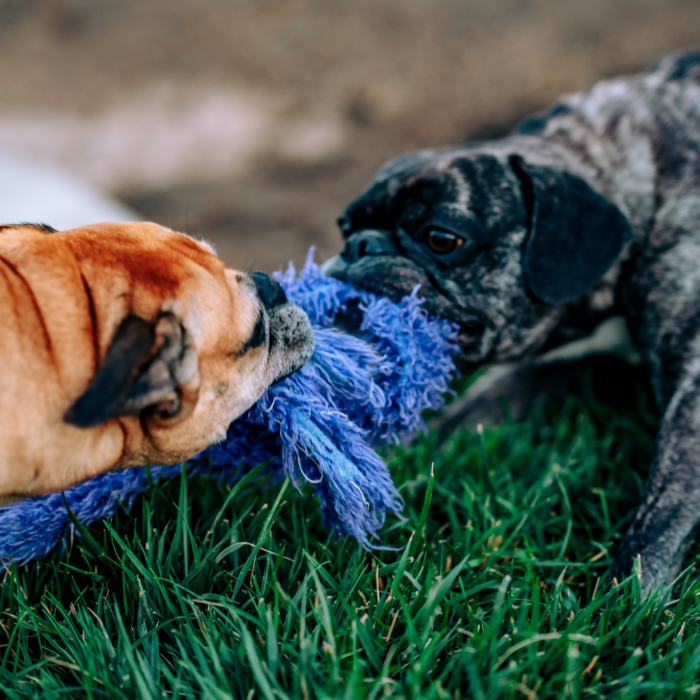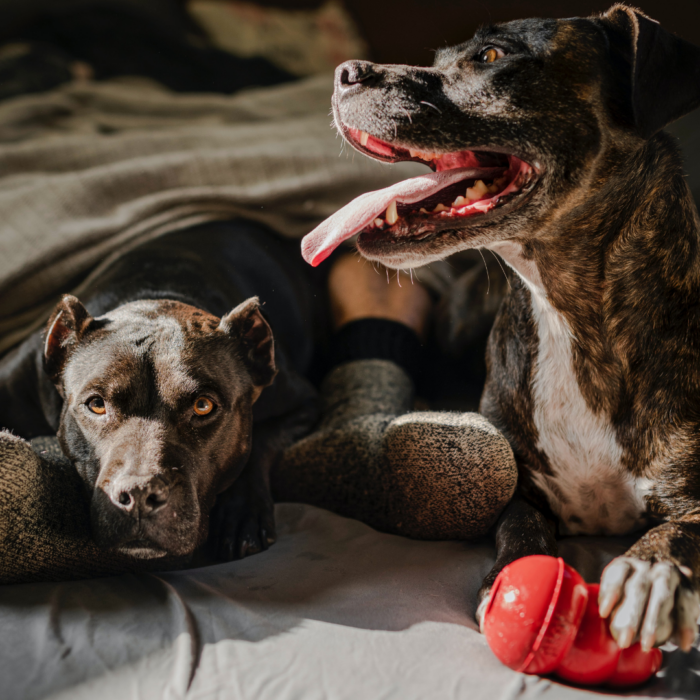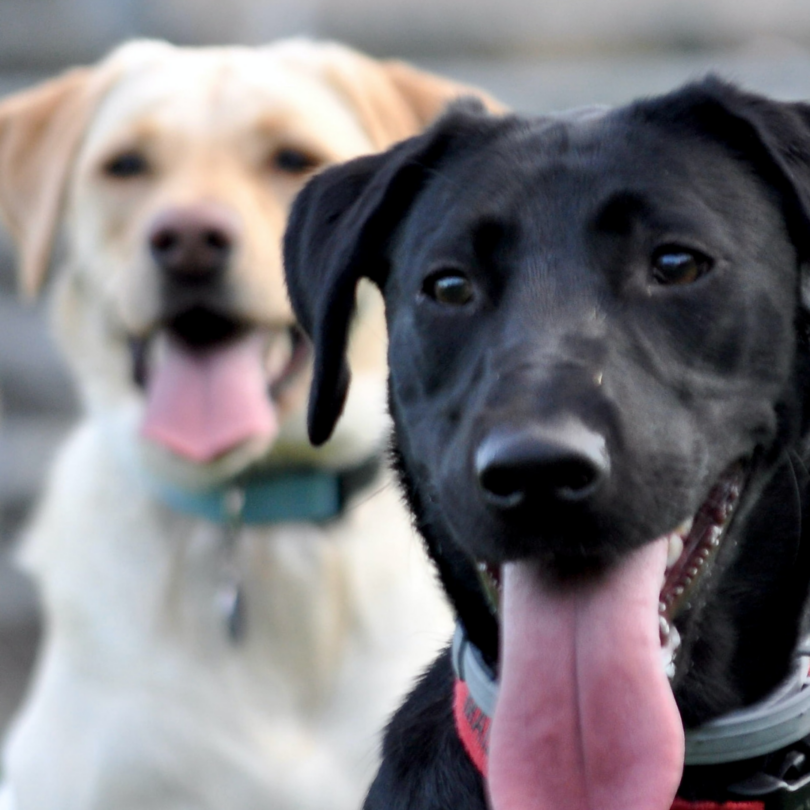In episode 43 of the Paws & Reward Podcast, I had Michael Shikashio on the podcast to talk about inter-dog aggression, when dogs within the same household are having arguments and/or causing injury to one another. Watch our conversation on my YouTube Channel.
What is inter-dog aggression?
Two or more dogs fighting in the home. Sometimes the aggression is only directed at the dog in the home. Other times it can include behavior concerns with multiple dogs, both inside and outside of the home. Each inter-dog aggression case is very nuanced and different.
What are some of the common patterns you’ve seen in inter-dog aggression cases?
The number one reason for dogs to have conflicts in the home is over resources; such as food, toys, bones, resting spots, people, and/or certain locations in the home.
Other reasons may include:
- High-arousal moments in time. This heightened level of arousal can cause one or both dogs to redirect onto one another in the home. Some high-arousal moments may include:
- Barking at the window
- The excitement when someone enters the home
- Transition from one room to the next
- Introducing a new dog to the home.
- Age differences
- Puppies and adolescent dogs have different social needs than mature adults. If not managed properly, this can become a challenge in the relationship.
- Health changes in senior dogs.
“When in doubt as to the cause, look at resources first.”
Michael Shikashio
Another reason to consider is the gender of the dogs involved in the conflict. No one knows why exactly, but when arguments and fights seem to be worse (more serious) between two females in the home.
That’s not to say two female dogs can’t live together, there are many successful homes with two (or more) female dogs cohabiting together happily. But it can be a factor to consider if a conflict does arise.

How do we define success or set realistic expectations in inter-dog aggression cases?
It depends on your personal goals. Sometimes being able to manage the situation permanently can be considered a success. Some dogs can never peacefully live together and need to be separated at all times. If that can be done safely, comfortably, and long-term then it can be considered a success for that pet parent.
Ask yourself: “What is my ultimate goal and what can I live with?”
“We have to respect our dog’s needs and what they want out of the relationship. They may not want total reconciliation with the other dog. For them, coexistence could be asking too much.”
Michael Shikashio
Do you want your dogs to be able to be alone together without issue? Or to play together? Or to go on hikes outside of the home without conflict? Or to be in the same room coexisting without a concern? A professional would be able to assess the situation and give you realistic expectations based on your dog’s behavior history.
How do we measure risk levels in inter-dog aggression cases?
When assessing the level of conflict, start by understanding the bite level system if there has been an injury (Cara Shannon bite hierarchy). Level 4 and above means high risk between the dogs for further harm. Muzzle training is recommended for future contact and reintroduction.
Through the intake and observation process, we are trying to determine if the reason for the fights is predictable and manageable in the environment? If it’s only over a certain resource, like marrow bones or a specific toy, then those resources can be taken away to prevent future arguments and/or fights. But if the trigger for the conflicts is unpredictable or unmanageable, then the risk of having the two dogs in the same home increases.
What are your favorite management strategies and safety tools for inter-dog aggression cases?
- Muzzle training
- Dog walkers to help alleviate pressure
- Dog daycares (if the dog doesn’t have conflicts with other dogs outside of the home)
- Separation of the dogs using baby gates, crates, rooms, etc.
- Removal of high-value resources
This is a lifestyle change, things may not go back to the way they were before training. It’s a lifelong strategy and commitment for you and the dogs. Knowing this, it’s important to recharge yourself and enact self-care during this process. It can be a long journey, take care of your own needs along the way.

What are the top 3 skills that everyone needs when living with inter-dog aggression?
Recognizing canine body language.
Recognizing the context in which inter-dog aggression takes place.
It can be very predictable once you know what triggers the behavior. Typically, one of the triggers that can cause things to escalate is one of the dogs approaching the other dog. There’s always a context.
Learning to break up a dog fight safely.
Once you learn these techniques and get the right tools, it’s encouraged to practice them without your dogs beforehand to become fluent before you may need them.

